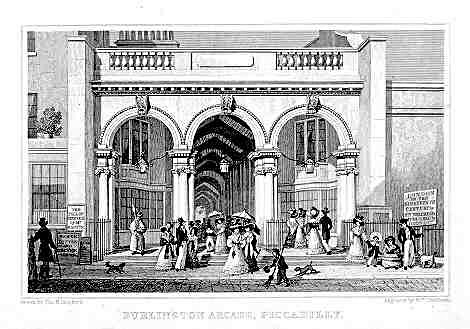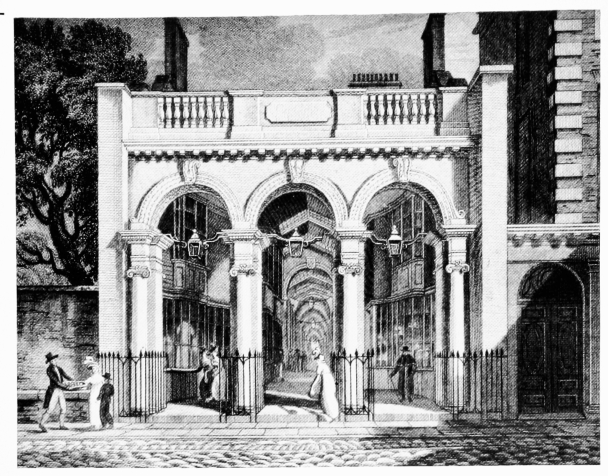
The Burlington Arcade was one of Britain’s first shopping arcade and definitely the poshest address for Tonnish shopping. Opened in London on March 20, 1819 “to great acclaim”, it remains the most famous Regency period shopping arcade in the city (http://www.burlington-arcade.co.uk/about-the-arcade/). According to the BA website Lord George Cavendish, who lived in Burlington House commissioned his architect, Samuel Ware, to design a covered promenade of shops – unofficially to stop ruffians from throwing quantities of rubbish, in particular oyster shells, onto his property and officially “for the gratification of the public and to give employment to industrious females”.

Located in the heart of Mayfair the covered market connects Piccadilly and Bond Street. Originally, there were 47 leaseholders, six of whom were ‘industrious females’ but, in accordance with the rules of the day, even the male milliners and corsetières were addressed as ‘Madame’. Many of the tenants and their families lived under very cramped conditions above and below their shops, sharing the space with their stock.
Since 1819, London’s Burlington Arcade has been protected by the Beadles – liveried guards wearing traditional frock coats and gold braided top hats now synonymous with its heritage. Originally recruited by Lord Cavendish from his family regiment the 10th Hussars, they enforced his stipulated code of behaviour in the Arcade. There was to be no whistling, singing, playing of musical instruments, running, carrying of large parcels or opening of umbrellas and no babies’ prams.

Today, these rules still apply and the Beadles – the smallest private police force in existence – continue to patrol the Arcade and uphold these regulations with the full power to eject any visitor daring to contravene them.
“On the west side of Burlington House is the Burlington Arcade a long covered way for the most part sacred to hosiers bootmakers and jewellers The Royal Arcade is a similar structure connecting Old Bond Street and Albemarle Street The Piccadilly Arcade on the south side of Piccadilly provides a shop lined covered way between that thoroughfare and Jermyn Street (A Pictorial and Descriptive Guide to London and Its Environs, 1819)”










